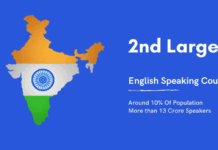Education system in India is main motive that education for all, to develop the nation.
Education, discipline that is concerned with method of teaching and learning in school or school like environment oppesed to various non formal and informal means socialization. Education can be thought of the transmission of the valueable knowledge to develop the society.
In this sence, it is equavalent to development of human conception throughout the others. Education can be designed to guide them through learning a culture, molding their behaviour in ways of adulthood and directing them towards the eventual role in society.
During the ancient time in India, that time had the Gurukul system of education where anyone who wish to study went to teacher’s house and request to be taught. If the teacher accepted as a student then he would stay in the place of guru and help him in all activities.
In the Gurukul, they were being taught the Vedas, Upanishads, Arthashastra, Archary. The conception of Sanskrit, metaphysics, mathamatics, etc. They were being taught. The student stayed as long as guru’s wished. All learning closely to own life and nature.
The modern school system was bought to India by Lord Thomas Babington in 1830, including English language. The word ‘modern’ subject like metaphysics and philosophy. Teaching were being confined to classroom and link with nature was broken, also close relationship between teacher and student. Universal and compalsary education for all children age group of 6-14 was cherished dream of the government project “Sarba Siksha Abhayan” project in constitution under article 45. The government appears to have serious role to establish the primary and secondary school.
As, education is the fundamental rights that gave our constitution to every Indian citizens. In, 2021-22 annual budget of the government the expenditure around 3% which is recognised to be very low. In the recent time, government made a project for the development of education in India the most notable one is National common Minimum Program ( NCMP). The main motive of the program is to increasing the expenditure on education to around 6%, to increase the quantity of education, to ensure that no one is denied of education due to poverty, or economic backwardness.
India is divided into several states and Union Territories. The state have own government and union terrritories directly rule by government of India, the administration were being appointed by the President of India. As per constitution the government of the state has the authority on deciding the policies and implementing them. The role of the government of India is very limited on the structure of higher education. This was changed a constitutional amendment in 1976.
So that education now came in the so-called concurrent list. The school education policies decided in national level through the implementation take place. The Central Advisory Board of Education(CABE), was set up in 1935 to play an important role in the field of education.
There is a national organisation that plays an important role to developing policies and program called National Council for Educational Research and Training (NCERT) that prepare national level framework apart from this each and every state has its own counterpart called State Council for Educational and Research and Training ( SCERT), these are the bodies the essentially purpose educational statistics were being set up.
The school system in India has four level: lower primary (age 6 to 10) , Upper primary (age 11 and 12), high(age 13 to 15), and higher secondary ( age 17 and 18). Students have to learn a common curriculum largely till the end of high school.
There is some amount of specialization possible at the higher secondary level student throughout the country student have to learn three languages (English, Hindi and own mother tongue). The center scheme Central Board of Secondary Education ( CBSE) This organisation is a government undertaking, under HRD ministry they established Kendra Vidyalaya in the different regions of country, offers subject like social science (History & civics and Geography), science is always they taught in Hindi.
Apart from these some private institutions under CBSE affiliation they taught their students in English as they have the main focus in English. Kendra Vidyalaya has CBSE syllabus but many private institutions under CBSE board they followed their own teaching schedules. They have a certain amount of freedom in what teach in lower classes.
The second Central Scheme is Indian Certificate of Secondary Education (ICSE) it should as a replacement from the Cambridge school certificate. The idea was modified under the chairmanship of first education minister of independence India Maulana Abul Kalam Azad. The main purpose is that to overseas Cambridge school certificate examination by an all India examination and creates for Anglo-Indian education.
Both CBSE and ICSE council conduct their own board examination in school in all over the country end of 10 years of schooling and again after 12 years. The ICSE and CBSE bourd have certain exclusive number of schooling all over the country, such as Kendra Vidyalaya (Under CBSE), Don Bosco( under ICSE), Dehli Public School (Both under CBSE & ICSE), La Martain ( Under ICSE), and many other schools under CBSE and ICSE.
Each state have their own board of education run by Department of Education with their own textbook and evaluation system. That were being decided by SCERT in the state, prescribed by NCERT. As per all over the country the state Kerala is unique in these case, who had the highest literacy rate among all states and was declared the first fully literate states, both male and female, which is an admirerable for all over the nation.
India, needs more development in the field of education to rise the more literacy rate, it would became a very big challenge for the government of India as well as for states.
“Indira Gandhi”- The iron lady of India!! 1st female Prime Minister of India.













































